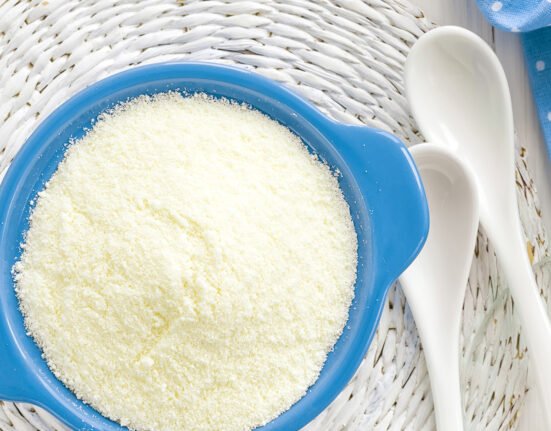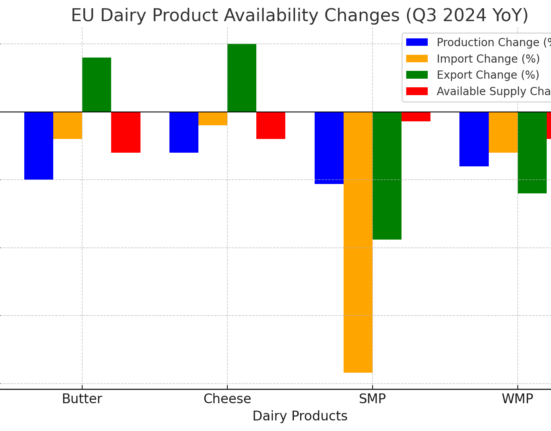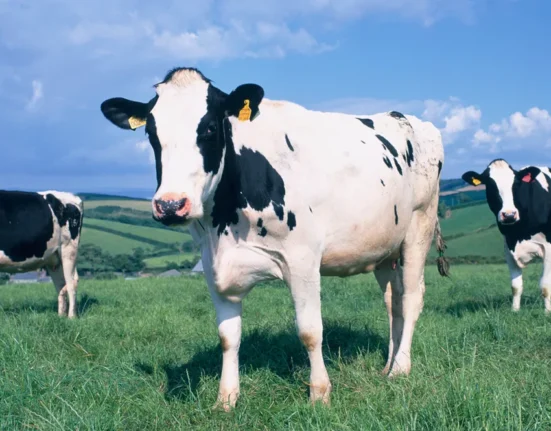May 29, 2025 | Brussels ‚ÄĒ Europe‚Äôs dairy sector is facing a multi-pronged crisis as milk production declines across key EU member states, driven by a combination of animal disease outbreaks, regulatory uncertainty, and rising operational costs. According to recent industry reports, the downturn is altering dairy trade dynamics both within the European Union (EU) and globally.
Data from AHDB indicates that milk deliveries across the EU have dropped by 2.3% year-on-year as of April 2025, with disease and farmer exits cited as major contributing factors.
ūüö® Key Factors Behind Europe‚Äôs Milk Decline
1. Disease Outbreaks
-
The resurgence of the Bluetongue Virus (BTV) has affected dairy herds in Belgium, Denmark, France, and Germany, resulting in cow losses, reduced productivity, and mobility restrictions.
-
The outbreak has placed new stress on veterinary infrastructure and herd health management, forcing many farmers to reduce herd sizes temporarily.
2. Environmental Regulations
- Uncertainty around the EU Green Deal and stricter emissions and land-use rules are causing hesitancy among farmers to reinvest in dairy infrastructure.
- Many small and mid-size dairy operations fear non-compliance fines and long-term investment risks, leading to early retirements and sector exits.
3. Economic Pressures
- Shrinking profit margins, volatile milk prices, and rising feed and energy costs have made dairy farming increasingly unviable for smaller operators.
- Several member states are witnessing herd reductions and stagnant reinvestment across rural farming economies.
ūüďČ Market Shifts: Cheese Rises While Milk and Butter Fall
Despite the fall in milk output, EU cheese production is expected to grow by 0.6% in 2025, reaching 10.8 million metric tons, according to DairyGlobal. In contrast, the production of milk powders and butter is forecasted to decline.
-
Butter prices have already risen sharply, with recent wholesale increases of over ‚ā¨100 per ton, signalling tight supply and rising demand pressures.
ūüĆć Global Dairy Context: Pressure and Opportunity
While the EU grapples with production losses, global milk production is projected to grow modestly by 0.8% in 2025, fueled by expansions in the United States, Oceania, and South America. However, Europe’s supply constraints may:
- Tighten global butter and powder availability
- Raise international prices for EU-origin cheese
- Force global buyers to shift sourcing strategies
This could have ripple effects on dairy importers, including markets like India, North Africa, and Southeast Asia, which rely heavily on EU dairy commodities.
ūüß≠ Strategic Outlook: Navigating the Decline
Industry stakeholders are calling for:
- Targeted support for disease-affected farmers
- Clarity on long-term environmental regulations
- Investment incentives to retain next-generation dairy farmers
Without proactive intervention, the EU could face long-term structural decline in dairy output, shifting its role in the global dairy market from exporter to balance player.







